Furniture Doesn’t Fit In Your New Home? Clever Solutions For Storing It!
Anyone who has moved just once, but especially over and over like we do, understands this all-too-common problem: what to do with furniture that doesn’t fit in the new home? Whether it’s excess decor accessories or (more usually) furniture, rugs, and other large items, figuring out what to do with these things can be tricky. Especially if you love the item or might have a future need for it. Here are my best tips for deciding what to keep and how to store it when you just don’t have the space!
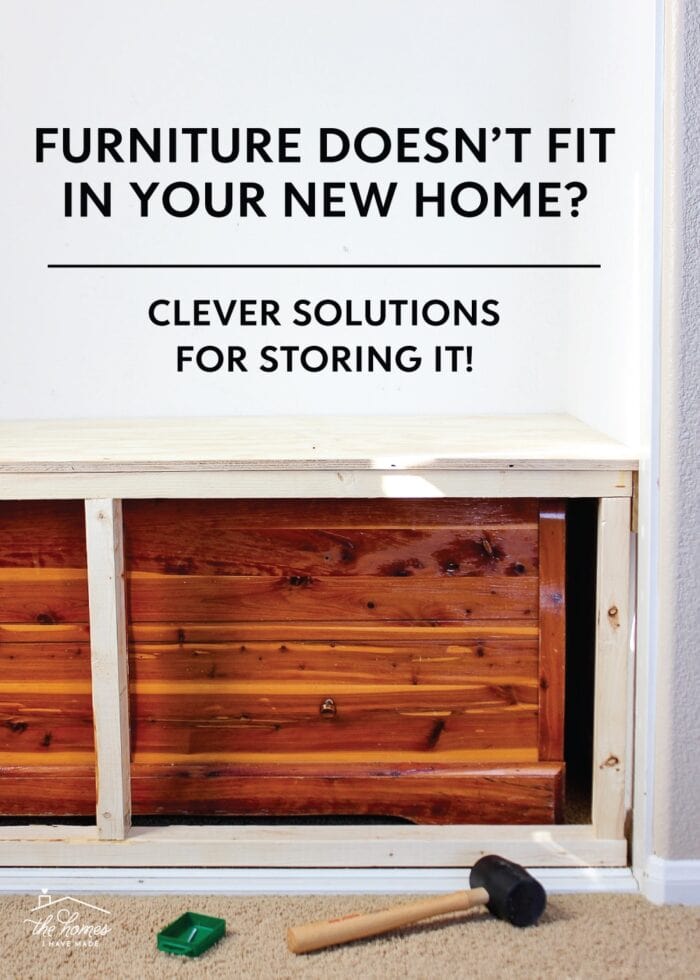
The Struggle Is (Very) Real
Without a doubt, one of the “universal struggles” of military families (or anyone who moves frequently) is making household items fit in home after home after home.
Despite very best efforts to choose couches, tables, and rugs (and even small things like baskets, drawer organizers, or lamps) that are standard size and have common functionality across spaces, it is practically inevitable to end up with items that just don’t fit anywhere (as well as blank spots that you have nothing to go in).
If you are moving into a long-term or forever home, making furniture decisions is a bit easier. If there is no space or purpose for an item, you can usually rationalize getting rid of it (no matter how hard it might be).
Where frequent movers run into even more trouble is the potential of needing said item in the future. Sure, that dresser might not fit in this house…but what if there is an extra bedroom in the next house? Or the one after that? After just a few moves, it can easily feel like you are lugging around an entire furniture store from state to state to state!
Buying, selling, and re-buying furniture gets old (and expensive) pretty fast, but so does living with a garage full of not-needed stuff. So deciding what to keep and how to store it is a constant and delicate balance. Here is what we have learned across 9 different moves (and therefor, 9 different home layouts!)
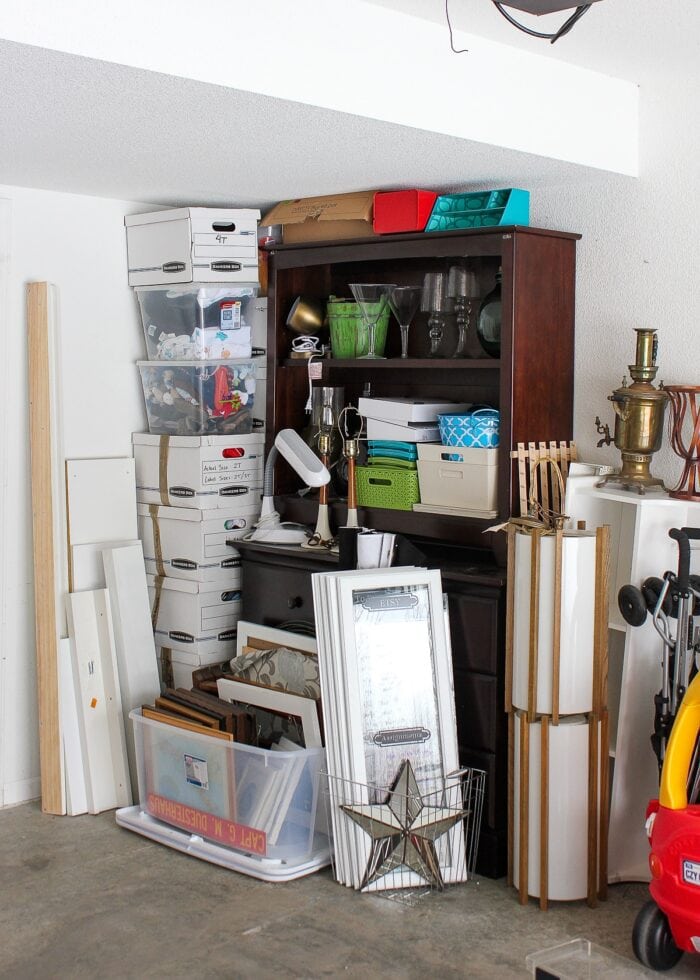
Our “Not Needed” Pile in our Kansas rental.
Deciding If The Item MUST Be Kept
Before you even start figuring out where to store extra items, you must first get real about the item itself and if you really need to keep it.
Although not always the case, I would suggest that if you didn’t find or make room for a particular item, then it is likely pretty low on your “love” list. Typically, we will work hard to make space in our homes for the items we truly love (even if they don’t make sense for the house’s flow or function.)
As such, leftover items usually fit into one of two categories:
- It really doesn’t fit anywhere despite how much you love it – in which case, you likely need to figure out how to store it
- Or, you are meh about it – in which case you should seriously consider getting rid of it
The Cost of Storing Versus the Cost of Replacing
In her book, Marie Kondo talks about the cost of storing (and, in our case, moving) an item in comparison to the cost of replacing it should you ever need it again. All-too-often (whether you move or not), we hold onto to items because we “might need them again someday.” But how often does that “someday” really come along? Kondo suggests: almost never.
These days, there is a never-ending availability of home items. So whether you purchase new or second-hand, you will most likely be able to replace a bed, bookshelf, table, or drawer organizer should you ever need one again (and likely with a version that fits your new home better).
And while that might come across as wasteful, the cost (and energy) of storing (or moving) items over and over and over (only to never use them), could also be considered just as wasteful (and quite frankly, burdensome).
Questions to Consider
There is no clear, easy way to determine if a home items should be kept – I sure wish there was…it would make moving a bit less stressful! Only you can decide if it’s time to part with an item or if it’s worth storing. But here are some questions to (seriously, thoughtfully) consider:
- Do you truly love the item?
- How long have you had the item?
- Have you gotten “enough” use out of it already?
- Is the item damaged or seriously worn?
- Can you easily re-sell it to recoup some of the original cost?
- Is there a very real, likely scenario that you will actually use the item again?
- Is the item part of a bigger set?
- Is the item irreplaceable (e.g., family heirloom, antiques)?
- Do you have space to store it? Do you want to give up that space to store it?
Frequent Mover? I suggest you re-consider items every time you move. There are items I’ve chosen to keep move after move after move, only to finally be ready to let them go on this most recent relocation. (Curious what furniture I got rid of this time? You can see it HERE!)
Our needs, opinions, spaces, and budgets change over time, so it’s always worth re-assessing instead of just dragging items around because you always have!
Ready to get rid of an item? Here’s what to do next: Donate Versus Sell | Getting Rid of the Stuff You No Longer Love
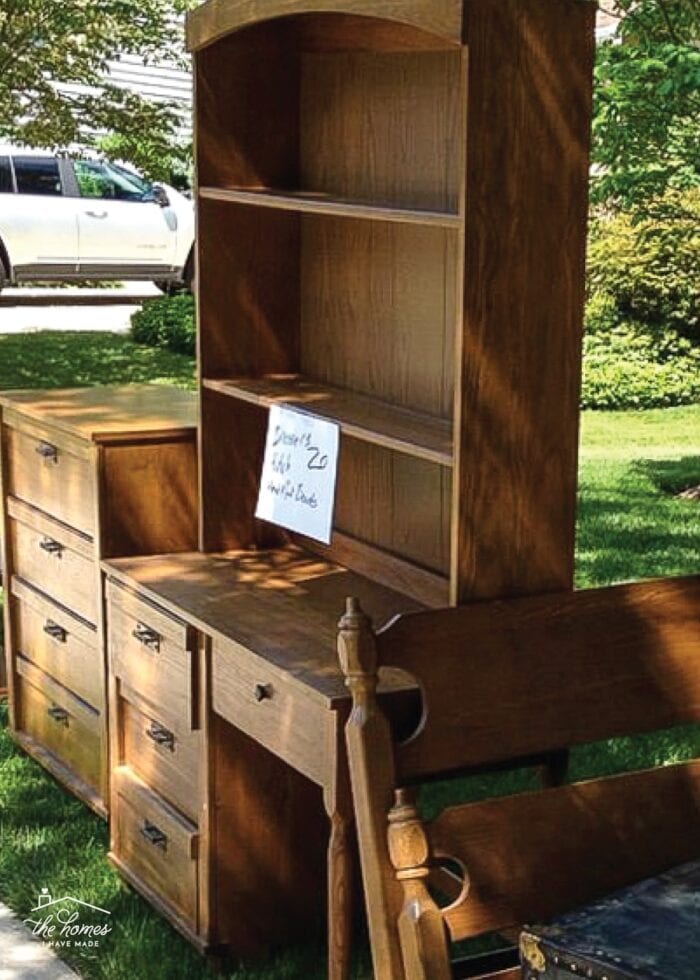
Places to Store Unneeded Furniture
Okay – so let’s say you went through the rigorous mental exercise of truly determining if an item needs to be kept and have determined that yes…even though you don’t have space for an item this time, you want to keep it for next time.
Now what?
Obvious Places to Store Unneeded Items
To start, there are some obvious places to store items, including:
- Attics/Crawl Spaces
- Basements
- Garages
Basements and attics are the most ideal for storage, since these areas are literally designed to be “out of sight, out of mind.” As such, they will have minimal impact on your day-to-day life (i.e., you won’t be dealing with or seeing the items regularly).
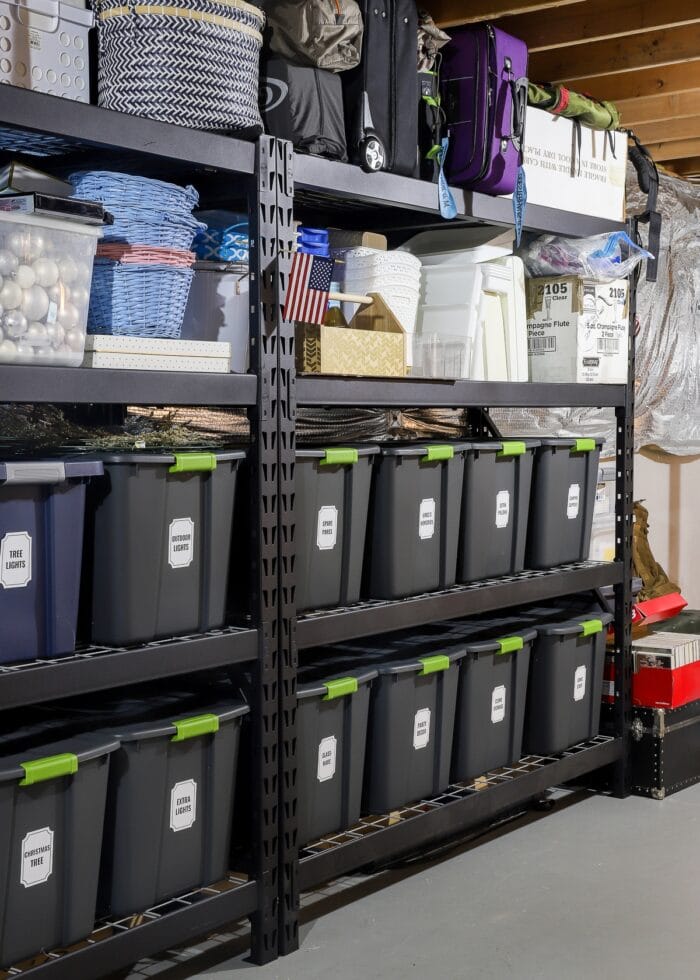
If your home lacks an attic or basement, the garage is another obvious storage area (especially if it has dedicated storage space on the sides or ceiling). However, using the garage will have a greater impact on your day-to-day living. Not only will you constantly see the items, but they will likely affect how you use (and if you can park) in your garage.

Dedicated side storage area in our North Carolina garage.
Sneaky Places to Store Unneeded Items
Beyond the obvious locations, there are some not-so-obvious places that you might be able to store un-wanted items, depending on size and shape.
- Closets – closets are great places for dressers, chests, shallow tables, and shelving (plus, outfitting closets with furniture pieces usually makes them much more functional!)
- Under Beds – anything that can be disassembled and stored flat
- Under Stairs
- Utility Closets
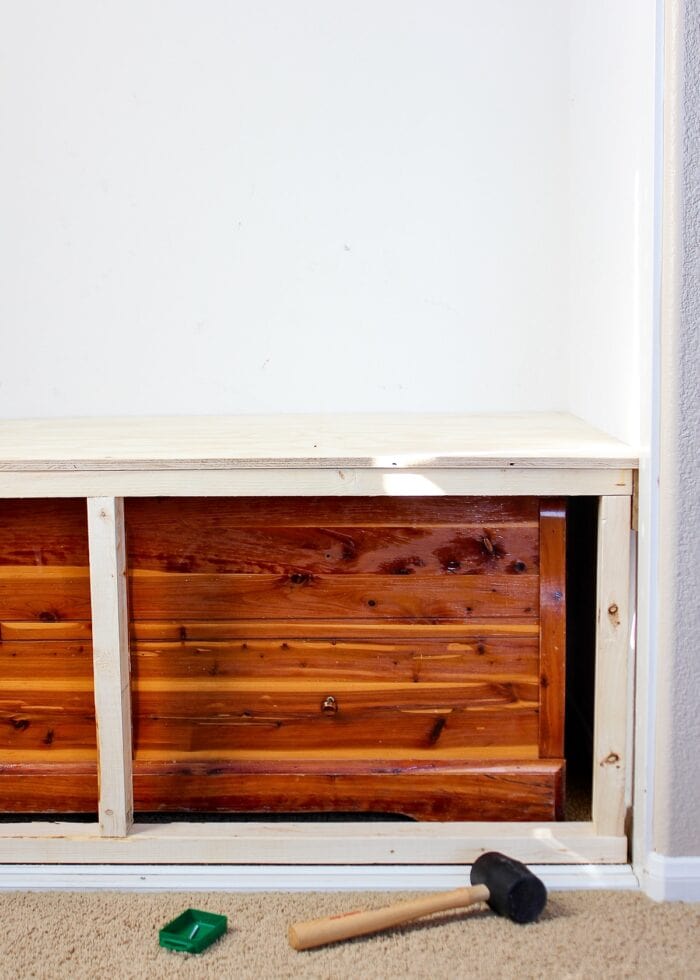
We had no where for this unsightly cedar chest (passed down from my Mom), so we constructed a “built-in” bench around it! See how: An Organized Nursery Closet Start to Finish
Finding More Storage Space
If you really, truly cannot fit your unneeded items somewhere within your home (AND you’re still sure you HAVE to keep it), then you will likely need to create or find additional storage space…typically in the form of:
- A Shed – Always check your lease/HOA before installing.
- Off-Site Storage Unit – The costs can add up fast, so do your research to determine if it’s worth it.
- Friends and Family – Newlyweds, new renters/homeowners, college students, etc might be willing to “borrow” your furniture while you don’t need it; just make sure they know you eventually want it back.
All three of these options will get items out of sight and help your home feel less cluttered. But you’ll need to determine if the extra cost/logistics is worth keeping the item(s) in the long run.
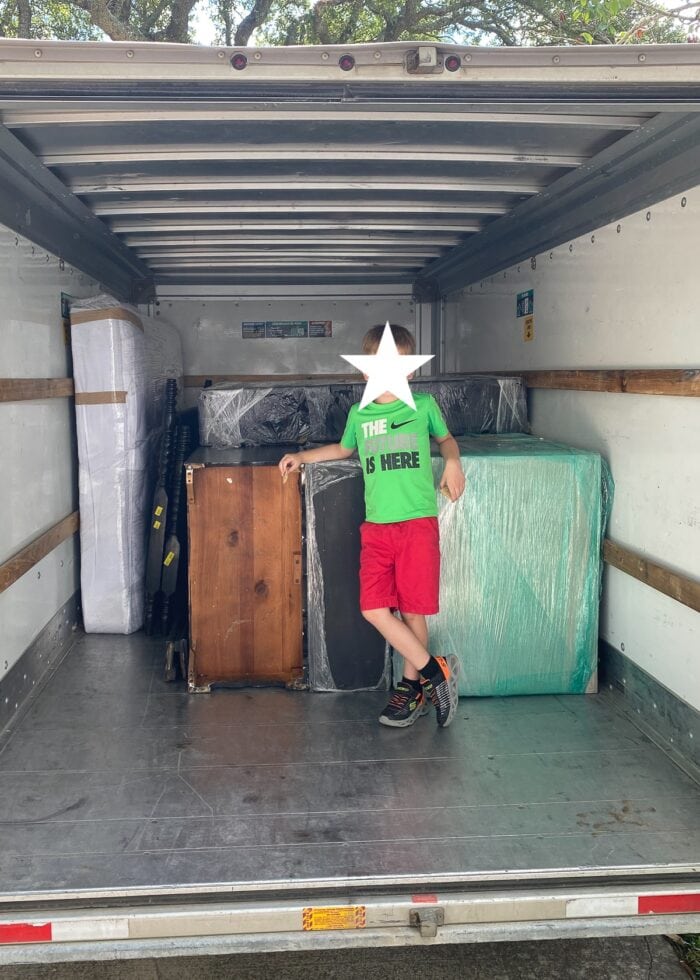
Delivering a bunch of our unwanted furniture to my college-bound niece.
Safely Storing Unneeded Items
Finally, no matter where you choose to store your unneeded items, you want to make sure you do so in a way that keeps them safe. Attics are prone to heat; basements and garages can experience flooding; and all homes can have bugs and rodents. As such, consider doing the following:
- Place blocks or risers under wood items to prevent them from getting wet
- Place cardboard boxes on shelves to prevent them from getting wet
- Keep furniture wrapped in plastic or moving blankets to prevent dents, scratches, fading, and other damage
- Disassemble (and store flat) anything that can bend or warp over time
- Place fabric items (e.g., quilts, pillows, baby clothes, etc) inside well-sealed plastic bags/bins to keep out bugs and moisture.
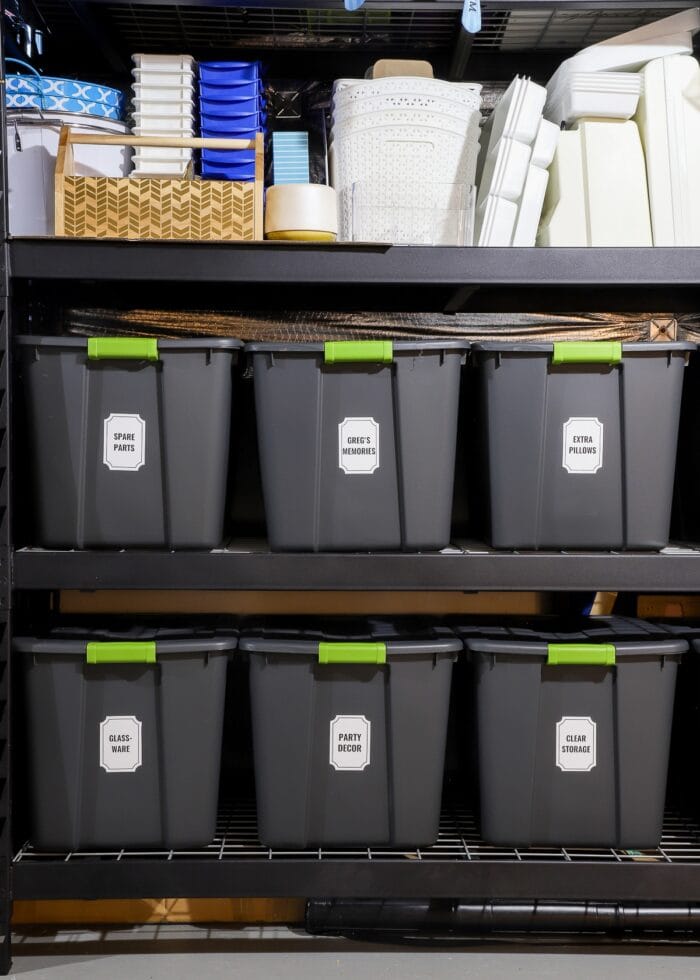
Shelving can help take advantage of vertical space, keeping floors clear.
Do You Have a Move Coming Up?
Check out my comprehensive collection of moving resources!
- The Complete “Smooth Move” Printable Moving Binder System
- Countdown to a Military PCS | Our Moving Timeline
- How to Declutter Your Entire Home Before a Move
- Easy Ways to Generate Extra Cash for a Move
- The BEST Moving Advice From Experienced Military Spouses
- Moving Essentials | What You REALLY Need Moving From One Home to Another
- How (& Why) to Plan Your Furniture Layout Before Moving Into a New Home
- How (& Why) To Color Code Your Moving Boxes
- How to Fill Nail Holes In Your (Rental) Walls
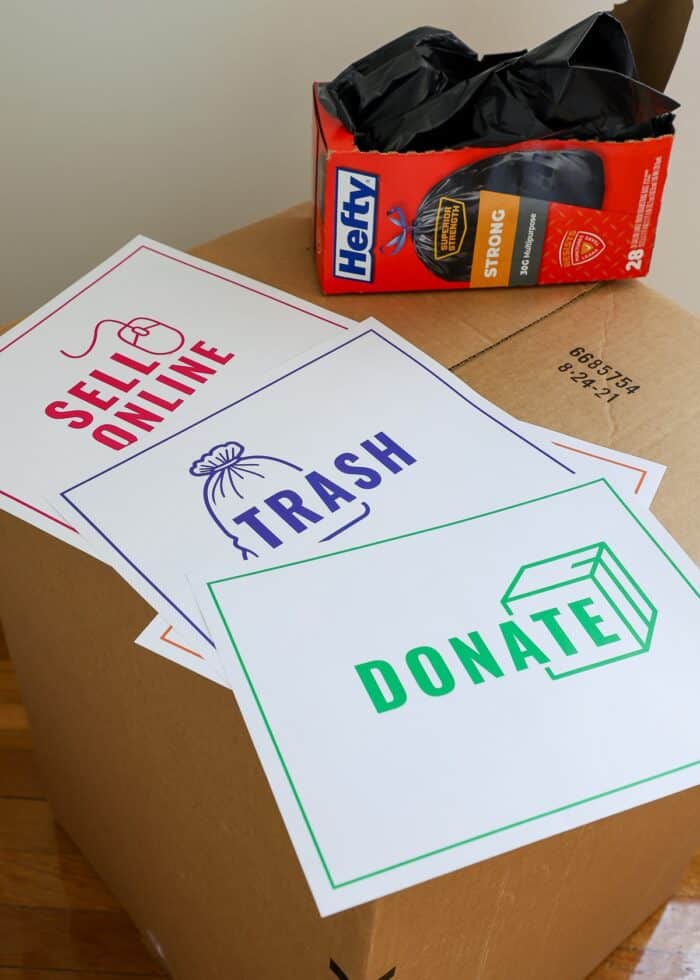
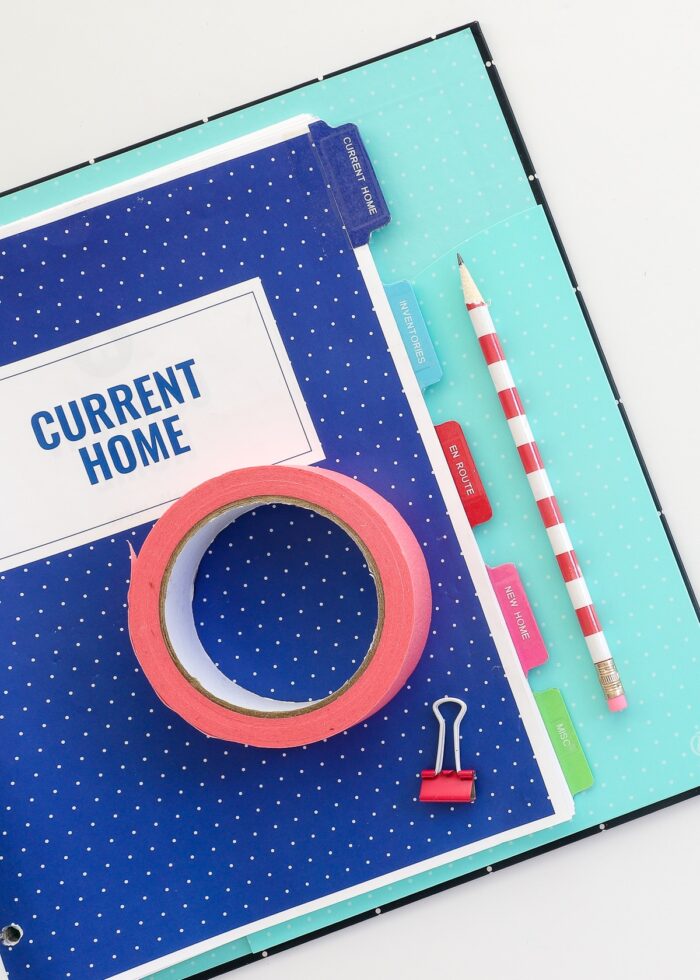
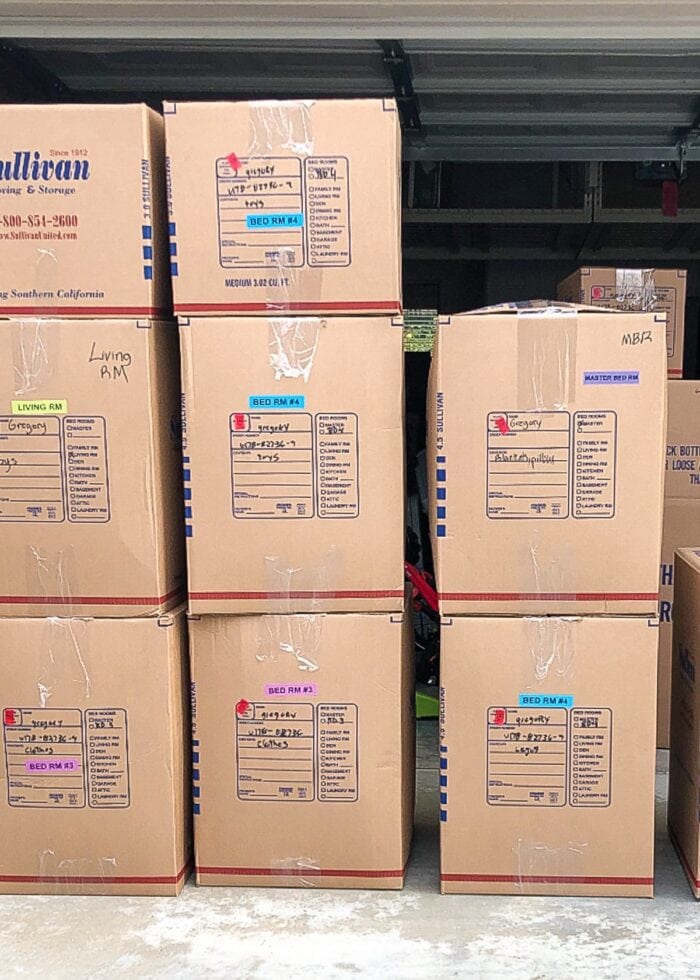
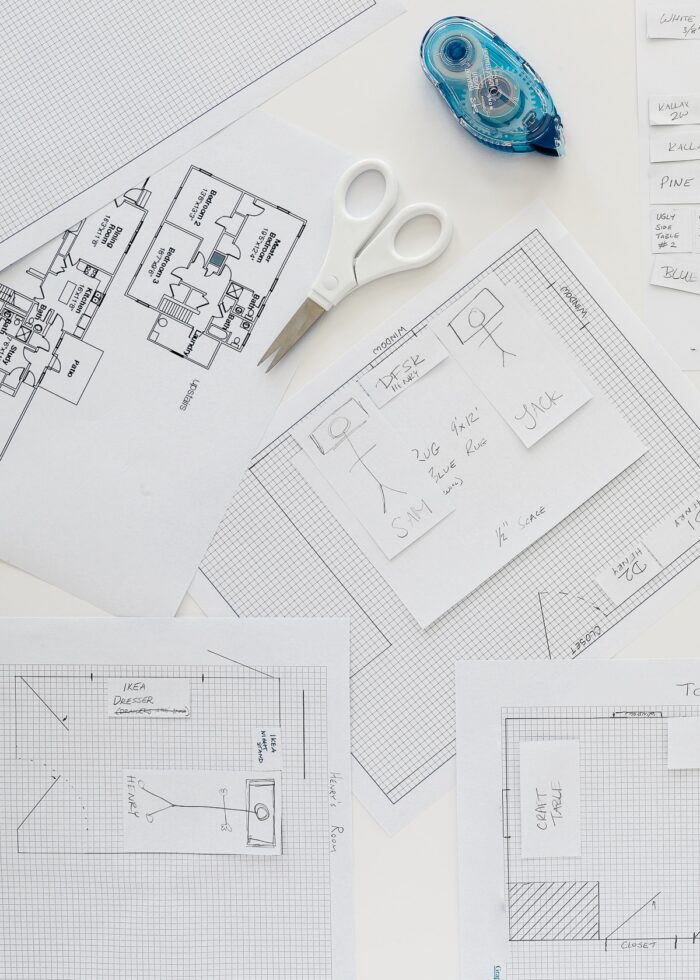
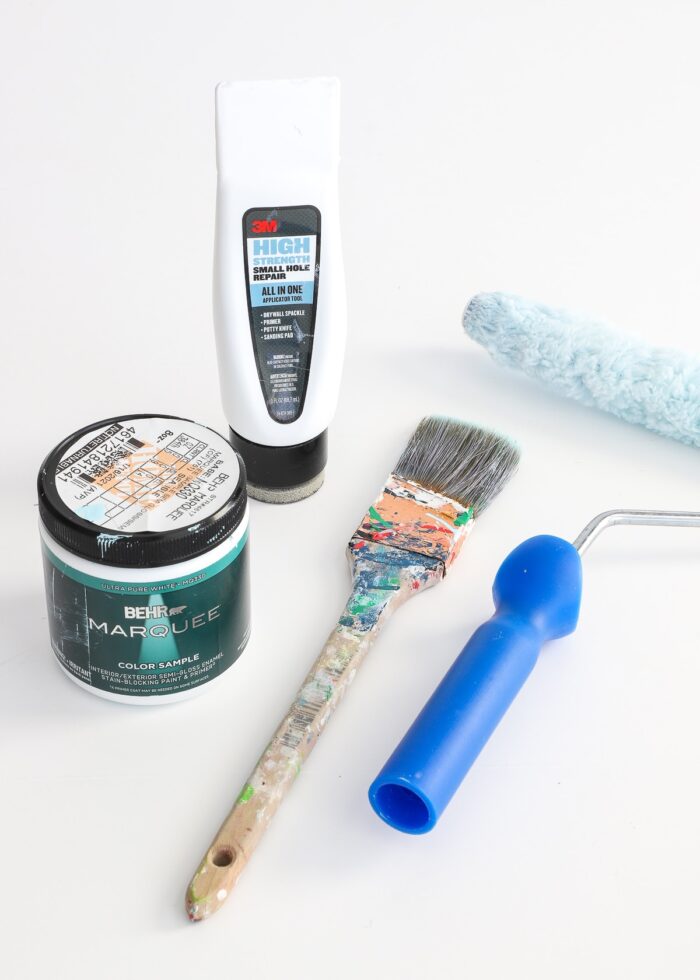
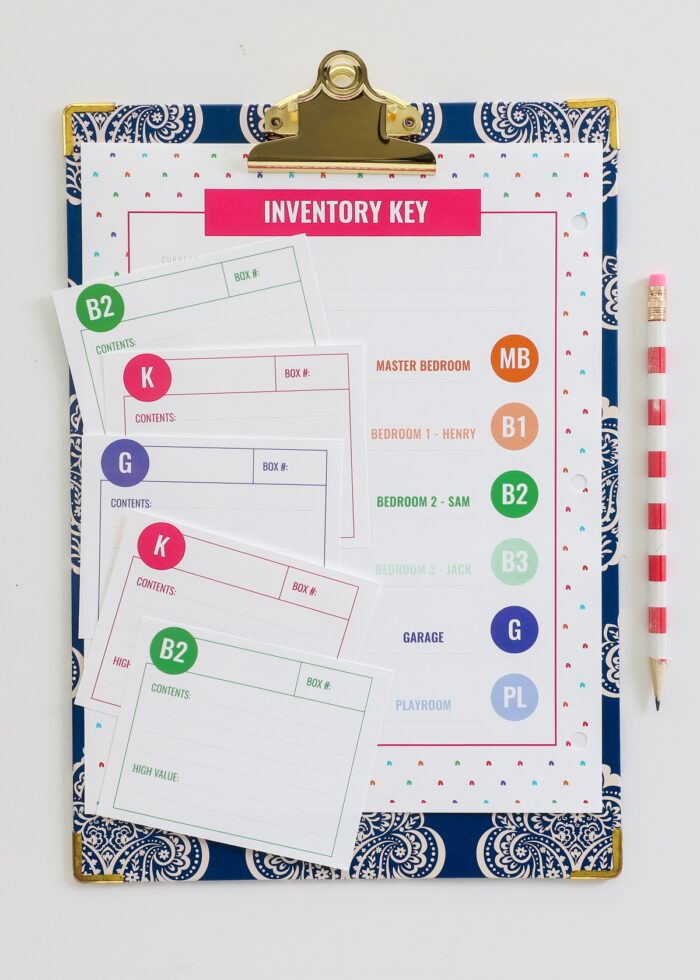
In full transparency, every time we move, I wish we could just unleash ourselves from the items we keep shlepping around. While I can usually get rid of the furniture that doesn’t fit pretty easily, I have a much harder time purging organization items (e.g., bins, baskets, drawer organizers, shelving) because of that “we might need it someday” mentality.
As a result, I practically have a garage full of empty bins and baskets. And despite all the self reflection and talk of “getting real,” I too have a few furniture pieces that I don’t necessarily love OR need, but just can’t seem to get rid of either.
I’m not perfect at keeping and getting rid of just the right amount, and we very much long for the day when we have our “real home” to finally get rid of the rest. But until then, I’ll keep re-assessing over and over and taking advantage of any storage spot I can find in order to make it all work!
Megan


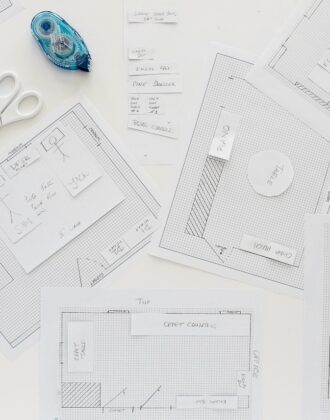
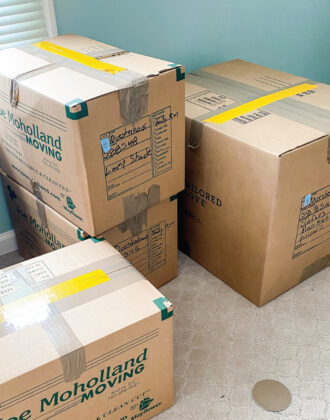
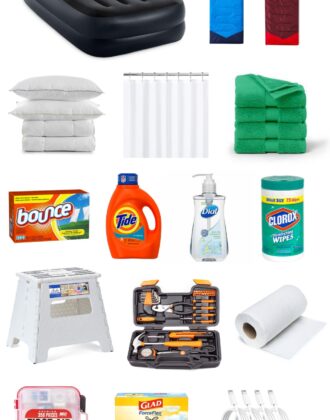
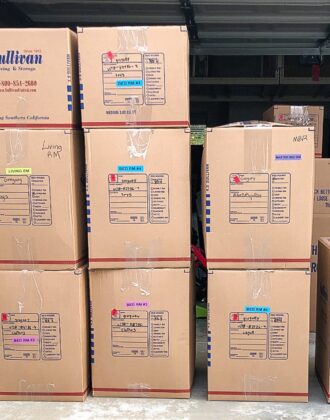

One Comment on “Furniture Doesn’t Fit In Your New Home? Clever Solutions For Storing It!”
Such helpful advice! I thought it was easier for everyone except me. Now I know we all go through the same process.